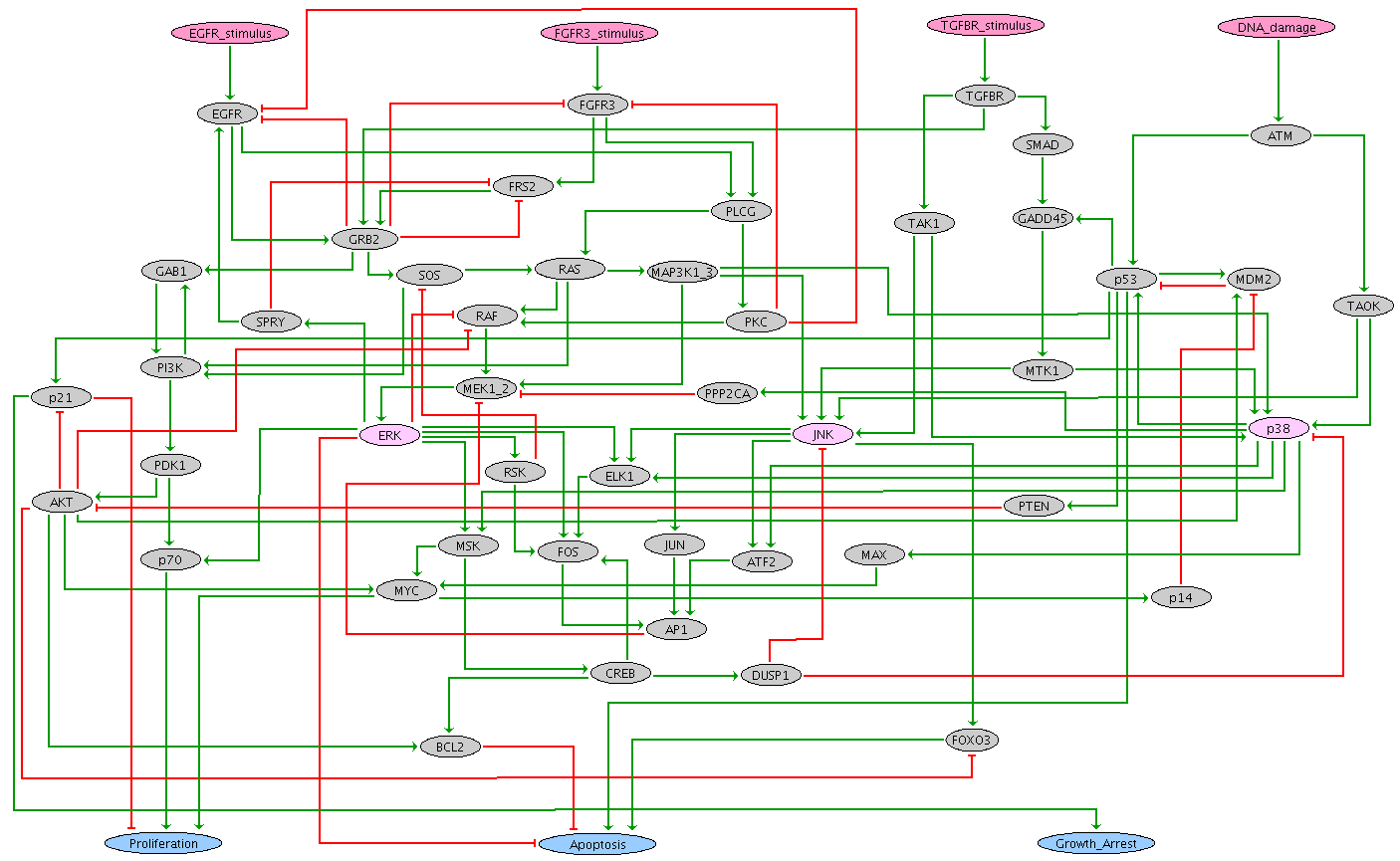The Mitogen-Activated Protein Kinase (MAPK) network consists of tightly interconnected signalling pathways involved in the control of diverse cellular processes, including cell cycle, survival, apoptosis and differentiation.
Based on an extensive analysis of published data, we have built a comprehensive and generic reaction map for the MAPK signalling network, using CellDesigner software.
In order to explore the MAPK responses to different stimuli and better understand their contributions to cell fate decision, we have considered the most crucial components and interactions and encoded them into a logical model, using the software GINsim. Our logical model analysis particularly focuses on urinary bladder cancer, where MAPK network deregulations have often been associated with specific phenotypes.
To cope with the combinatorial explosion of the number of states, we have applied novel algorithms for model reduction and for the compression of state transition graphs, both implemented into the software GINsim. The results of systematic simulations for different signal combinations and network perturbations were found globally coherent with published data. In silico experiments further enabled us to delineate the roles of specific components, cross-talks and regulatory feedbacks in cell fate decision. Finally, tentative proliferative or anti-proliferative mechanisms can be connected with established bladder cancer deregulations, namely Epidermal Growth Factor Receptor (EGFR) over-expression and Fibroblast Growth Factor Receptor 3 (FGFR3) activating mutations.
